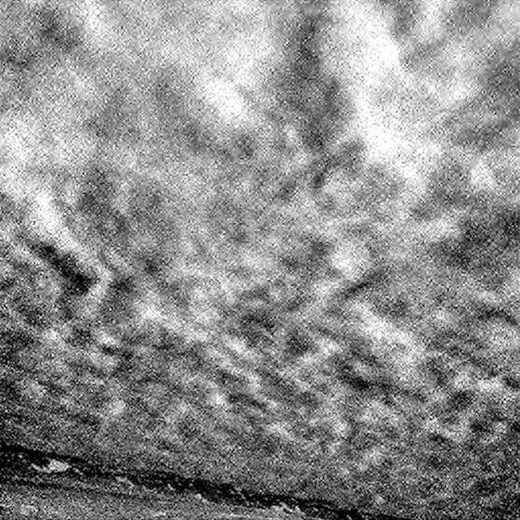
Well into its fifth year, the rover has now shot more than 500 movies of the clouds above it, including the first ground-based view of martian clouds shaped by gravity waves, researchers reported here this week at the Lunar and Planetary Science Conference. (Gravity waves, common atmospheric ripples on Earth that result from air trying to regain its vertical balance, should not be confused with gravitational waves, cosmological ripples in spacetime.) The shots are the best record made so far of a mysterious recurring belt of equatorial clouds known to influence the martian climate.
Understanding these clouds will help inform estimates of ground ice depth and perhaps recurring slope lineae, potential flows of salty water on the surface, says John Moores, a planetary scientist at York University in Toronto, Canada, who led the study with his graduate student, Jake Kloos. "If we wish to understand the water story of Mars's past," Moores says, "we first need to [separate out] contributions from the present-day water cycle."
The observations seem likely to constrain fine-grained models of martian clouds, which have been built in the past with limited information, says Nicholas Heavens, a planetary scientist at Hampton University in Virginia, who is unaffiliated with the study. "These cloud videos are not just pretty pictures."
Scientists already know much about martian clouds thanks to views from orbiting spacecraft and the Phoenix lander, which took skyward snapshots during its 6-month mission in 2008. Despite a whisper-thin atmosphere, the planet supports multiple regimes of clouds, depending on its elliptical orbit. As it nears the sun, heat spurs chaotic globe-swarming dust storms that dominate its atmosphere and seem to limit cloud formation. Then as Mars drifts toward aphelion—the point farthest from the sun in its orbit—two cloud systems form: Above the frigid poles, clouds of carbon dioxide arise, whereas around the equator a belt of barely visible water-ice clouds takes shape, similar to cirrus clouds on Earth.
Using Curiosity's navigation camera, Moores and Kloos recorded eight-frame movies of this wispy cloud belt for two martian years. They've used two angles to capture the clouds: one pointed directly up, to see wind direction and speed, and another that keeps the rover's horizon in the frame, allowing a view into the clouds' depth. The captured clouds are so thin as to be invisible without painstaking computer enhancement, Kloos said in his presentation Tuesday.

Satellites circling Mars have seen aphelion clouds sitting close to the surface at night, then rising 20 kilometers up in the afternoon. Such a pattern indicates there could be an inversion layer, a stretch of atmosphere where temperatures rise with height, rather than cool, that could be trapping the clouds at night, Heavens says. That inversion breaking down in the morning, at the time Kloos and Moores estimate, "could be a sound explanation for the loss of the first peak," he says.
More substantial data are needed to validate their claim of two peaks rather than just one, adds Tim McConnochie, a planetary scientist at the University of Maryland in College Park. But this work does suggest that these clouds make up only one-fourth of the opacity seen from orbit, he adds, with the rest perhaps accounted by dust or water-ice haze.
Given the limited water vapor, solar energy, and atmosphere, the martian clouds lack the variety of shapes seen on Earth. But during one day of cloud gazing—Curiosity's 1302th martian day, to be precise—the team got lucky and saw something unusual. That day, when Curiosity looked to the horizon, it saw a sequence of straight, parallel rows of clouds flowing in the same direction: the first ground-based view of a gravity wave cloud. Similar to the waves that follow a pebble tossed into a pond, gravity waves are created when some unknown feature of the martian landscape causes a ripple in the atmosphere that is then seen in clouds. Such waves are common at the edge of the martian ice caps, but thought to be less frequent over its equator.
It's far from certain those are gravity waves, though, Heavens says. They could also be "cloud streets," a similar looking pattern that's potentially associated with strong winds striking heated air parcels as they near the top of the lower atmosphere.
There's something comforting and familiar in seeing these clouds, Moores says. "The martian environment is the exotic wrapped in the familiar." The clouds move like clouds we see on Earth. But they remain distinctly alien, too. "The sunsets are blue, the dust devils enormous, the snowfall more like diamond dust, and the clouds are thinner than what we see on the Earth."
*Update, 23 March, 10:13 a.m.: This story has been updated to clarify the difference between gravity waves and gravitational waves.



Comment: See also: Solar system-wide climate change: 'Physically impossible' clouds appeared over Mars in 2012 - NASA has no clue what's going on